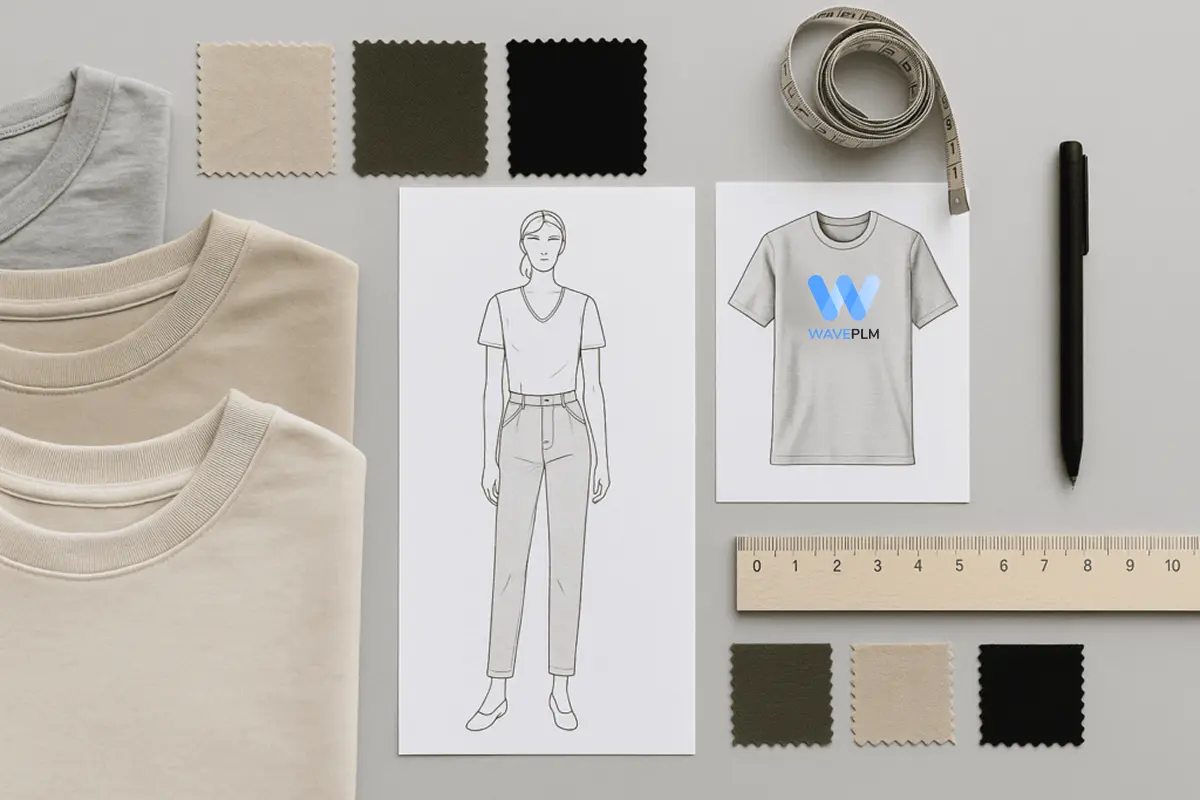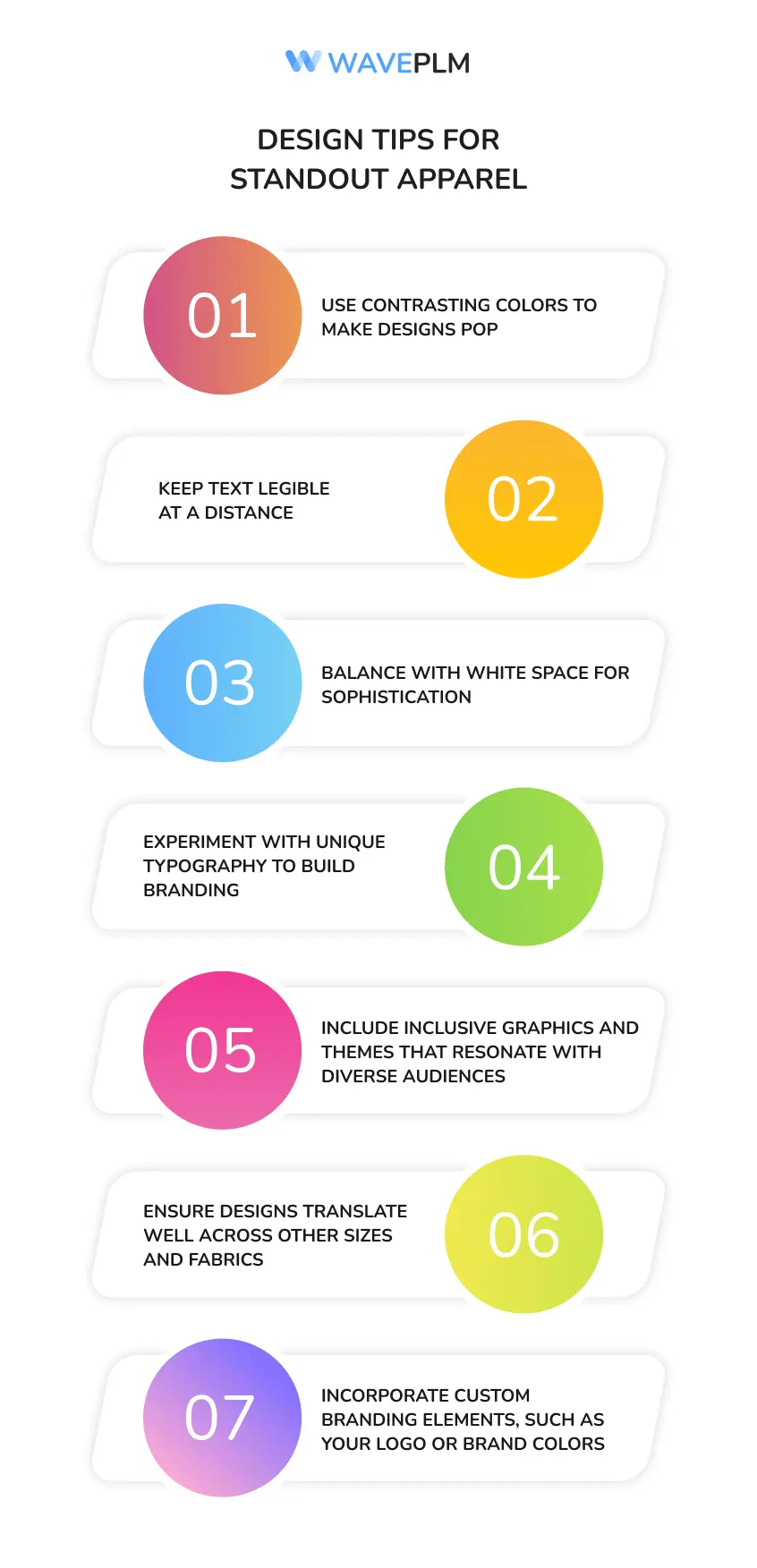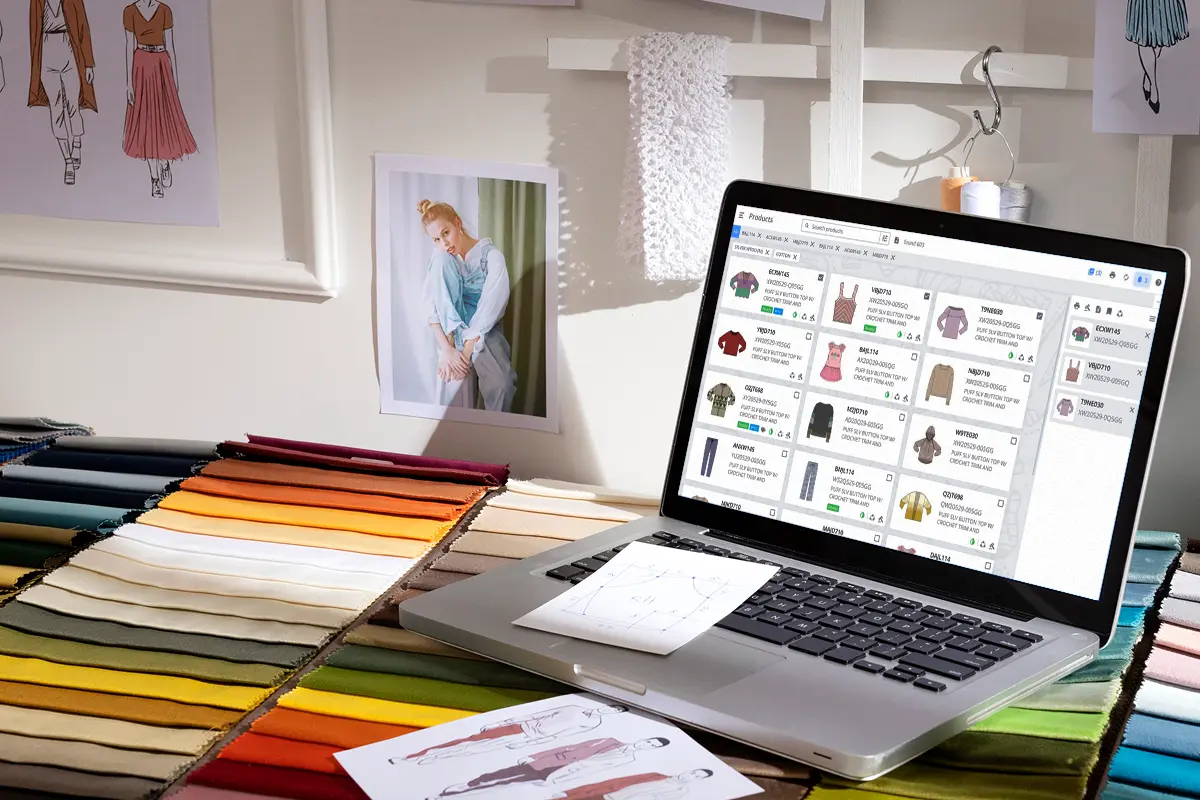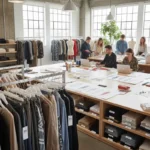
Fashion today isn’t only about trends — it’s about individuality, expression, and inclusivity. Clothing customization lets people create apparel matching their body type, personality, and lifestyle. From sample size clothing used on the runway to custom T-shirts for events, the fashion industry is evolving to celebrate body diversity, wider size ranges, and more personal designs.
Customization options now extend beyond apparel to include accessories like personalized smartphone cases and backpacks, as well as baby clothing such as custom baby grows. Customers can browse a catalog of customizable products to find the perfect fit for any need.
This extended guide explores customization techniques, tools, and design tips while showing how PLM (Product Lifecycle Management) systems streamline the process. Whether you’re tailoring clothes for yourself, building a new brand, or creating sample garments for development, customization opens a world of opportunity.
Key Takeaways
- Clothing customization empowers designers, brands, and clients to express individuality while addressing body diversity.
- Choosing the right fabrics, patterns, and measurements ensures garments truly fit a wider range of bodies.
- Selling custom apparel requires not only creativity but also efficient operations—an important part where PLM software helps.
- Sample garments are a critical step in development, giving designers the chance to determine fit on different body types before large-scale production.
- Clothing customization offers great value, especially when ordering in bulk, as it lowers the cost per unit.
Why Clothing Customization Matters
The fashion industry has long relied on sample size clothing—often UK size 8 or 10—when preparing collections. But most people don’t fit into these standard sizes. This gap creates pressure on both designers and women who want garments that represent their bodies. The reliance on one brand’s definition of a fit model limits representation and creates unrealistic expectations about body image.
By focusing on customization, brands can design inclusive collections, offering a wider range of fits and styles. Customization empowers individuals to express their own style and create their own clothes that reflect their unique personality, making fashion more personal and representative. For example, two samples in different size ranges allow designers to compare how garments wear on varied bodies. This ensures more women can see themselves represented in clothing lines.
Customized clothes aren’t only for runway looks—they make milestone birthdays, team uniforms, or even personal gifts more meaningful. They show thought, care, and inclusivity in ways standard sizes can’t. For many clients, personalization feels like an important part of feeling represented and celebrated. Creating your own clothes allows for unique self-expression and showcases your personal style.
Techniques for Customizing Clothing
- Screen printing – delivers bold, durable graphics and works well for promotional events or branded collections.
- Embroidery – offers a textured, polished finish, especially for logos or uniforms. Sleeves are a popular placement option for custom prints and designs, in addition to the front, back, and hood.
- Direct-to-garment (DTG) printing – enables full-color, intricate designs for small runs or one-off creations.
- Pattern alterations – essential for adjusting to different body types, ensuring inclusive size ranges.
Testing on fit models helps determine how garments adapt to varied body shapes. Instead of focusing only on standard sizes, using multiple models ensures sample garments reflect real-world wear.
Tools for Success
Customization requires practical tools:
- Design software – enables creative freedom while letting designers adjust details like measurements and typography. Users can start from existing designs or create new ones from scratch.
- Printing/embroidery machines – bring digital designs to life.
- Mockup studios – let brands preview designs on sample garments before investing in production.
PLM software adds another layer. It centralizes pattern development, stores body measurements, and tracks sample revisions. Designers can log changes, compare different models, and create a clear workflow from concept to delivery. This reduces errors, ensures data consistency, and allows brands to scale while remaining inclusive.
Fabrics, Fit, and Body Diversity
Fabric choice and material determine comfort, durability, and print quality. Cotton remains popular, while ring-spun cotton offers a soft feel and premium quality along with superior printing results. Polyester, a material that is lightweight and moisture-wicking, is ideal for activewear. Blending materials can also address variation in wearability across seasons or body types.
Fit, however, remains the most important part. A single sample size dress cannot represent all shapes. By using two samples — one medium and one larger — designers can determine variation across measurements. This creates collections that serve a wider range of women. It reduces the pressure associated with body image by providing more inclusive clothing.
Design Tips for Standout Apparel
- Use contrasting colors to make designs pop.
- Keep text legible at a distance.
- Balance with white space for sophistication.
- Experiment with unique typography to build branding.
- Include inclusive graphics and themes that resonate with diverse audiences.
- Ensure designs translate well across other sizes and fabrics.
- Incorporate custom branding elements, such as your logo or brand colors, to enhance brand recognition and marketing impact.

Customization for Special Occasions
Custom clothing enhances moments that matter. Families often order matching shirts for reunions, couples have apparel created for anniversaries, and businesses design corporate wear for special occasions and events. These garments reinforce unity and connection. Custom clothing can also serve as promotional products for conferences, giveaways, and marketing campaigns.
On the runway, sample garments designed for multiple models represent inclusivity in front of global audiences. For instance, showcasing other sizes alongside standard sizes reflects body diversity and broadens how collections are received.
Personalized clothing as gifts also continues to grow. From dresses with names embroidered inside to jackets altered for specific body measurements, these garments demonstrate care and thoughtfulness.
Selling Custom Clothing Online
The rise of e-commerce has transformed customization into a global opportunity. Ecommerce platforms make it easy to sell custom clothing and manage online ordering. Brands must focus on three pillars:
- Quality – every garment must meet durability and comfort expectations.
- Marketing – photos should feature a wider range of models and body types, not just one sample size.
- Operations – efficient order management, size tracking, and supplier communication matter, especially when integrating with ecommerce platforms to streamline the process of adding new products and managing existing products.
PLM integrates these pillars. It helps brands manage development data, coordinate with suppliers, and store customer feedback. With this foundation, designers can scale collections while staying aligned with inclusive practices. Brands can also expand their offerings by creating custom products, modifying existing products, and testing new products for their online stores.
Bulk Orders, Discounts, and Sample Development
Bulk orders reduce costs, often by up to 60%, and guarantee consistency across garments. Bulk discounts further lower the overall price, making large quantity orders more cost-effective for businesses and organizations. Yet sample development remains vital. Designers rely on fit models to test clothing at multiple points in the line. By preparing two samples instead of one, they gain insight into how fabrics, patterns, and wear vary across size ranges. Producing branded clothing for teams is also possible at this stage, including options like polo shirts with a company logo or team logo for enhanced brand visibility.
This process highlights the need for inclusive collections. Custom clothing can be produced for various teams and organizations, and adding a logo to apparel like polo shirts increases brand recognition and visibility. Custom clothing doesn’t exist only in limited runs; it must also reach production at scale while still fitting bodies of different shapes and weights.
Order Management and Fulfillment
Efficient order management and fulfillment are the backbone of any successful custom clothing business. Our platform streamlines the entire process, making it easy to manage orders for custom apparel, whether you’re creating custom t shirts, hoodies, or a whole range of personalized clothing. With print on demand technology, each item is produced and shipped directly to your customers as soon as an order is placed, eliminating the need for inventory storage and reducing waste.
You can offer your customers a variety of shipping options, including expedited shipping for those last-minute orders. Automated order tracking and real-time updates keep both you and your customers informed every step of the way, from production to delivery. This seamless system allows you to focus on designing new apparel and growing your business, while we handle the logistics of producing and shipping your custom clothing. Whether you’re selling a single shirt or fulfilling bulk orders, our fulfillment process ensures your custom designs reach your customers quickly and reliably.
Security and Payment
When it comes to selling custom clothing, security and smooth payment processing are essential for building trust with your customers. Our platform uses advanced SSL encryption to safeguard all sensitive information, ensuring that every transaction is secure. Customers can choose from a range of payment options, including major credit cards and PayPal, making it easy and convenient to purchase custom apparel.
Our automated payment processing system provides real-time transaction updates, so you and your customers always know the status of each order. Whether you’re creating custom clothing for a small team or selling a wide range of custom apparel online, you can do so with confidence, knowing that every payment is handled securely and efficiently. With our robust security measures in place, you can focus on creating and selling unique apparel, while we protect your business and your customers’ information.
Quality Assurance and Customer Feedback
Ensuring high quality keeps clients satisfied and brands credible. Strong stitching, reliable fabric, and accurate measurements determine how garments perform over time. High-quality custom clothing creates a lasting impression on customers, helping brands stand out and build loyalty. Quality assurance requires several steps:
- Pre-production checks (fabric weight, pattern accuracy).
- In-process inspections (seam strength, consistency across garments).
- Post-production evaluations (final measurements, durability).
Customer feedback also drives improvement. Surveys, reviews, and direct communication provide data to refine clothing lines. PLM tools log this information, helping brands make data-driven decisions about inclusivity, fit, and body image representation.
FAQ and Support
We understand that creating and selling custom clothing can raise a lot of questions, especially if you’re new to the world of custom apparel. That’s why our comprehensive FAQ section is packed with answers to common questions about our platform, clothing customization techniques, and how to create custom t shirts and other apparel that stand out. Whether you’re looking for tips on designing shirts, understanding the best printing methods, or learning how to set up your online store, our resources are here to guide you.
In addition to our FAQ, we offer dedicated support through email, phone, and live chat. Our team is ready to help you with everything from technical questions to creative ideas, ensuring you have the support you need at every stage of your business. With our platform, you can confidently create custom clothing, knowing that expert help and valuable resources are always within reach. Whether you’re designing for a team, launching a new business, or expanding your product range, we’re here to help you succeed.
The Role of PLM in Customization
PLM software has become a backbone of fashion development. For custom clothing, it ensures alignment between design and production, manages sample garments efficiently, and tracks inclusive fit strategies. It prevents costly errors by consolidating research, body measurements, and sample revisions into one system.
For example, when a designer alters a pattern for other sizes, PLM logs the changes and ensures every team member works with updated data. This collaborative approach allows brands to build collections that represent more women while saving time and money.

Summary
Clothing customization is more than a trend—it is a shift in the fashion industry. By moving beyond limited sample size clothing, designers and brands can embrace body diversity, ensure garments fit real women, and make fashion more inclusive. Whether developing runway collections, designing custom dresses for clients, or creating apparel lines online, customization gives brands the tools to stand out.
With PLM software managing sample development, data, and customer feedback, customization becomes not only creative but also efficient. Fashion has the chance to represent more bodies, celebrate individuality, and create clothing that resonates deeply with people worldwide.
The future of customization isn’t just about creating unique apparel—it’s about reshaping the industry to determine how inclusivity, technology, and personal expression can exist side by side.





Leave a Reply